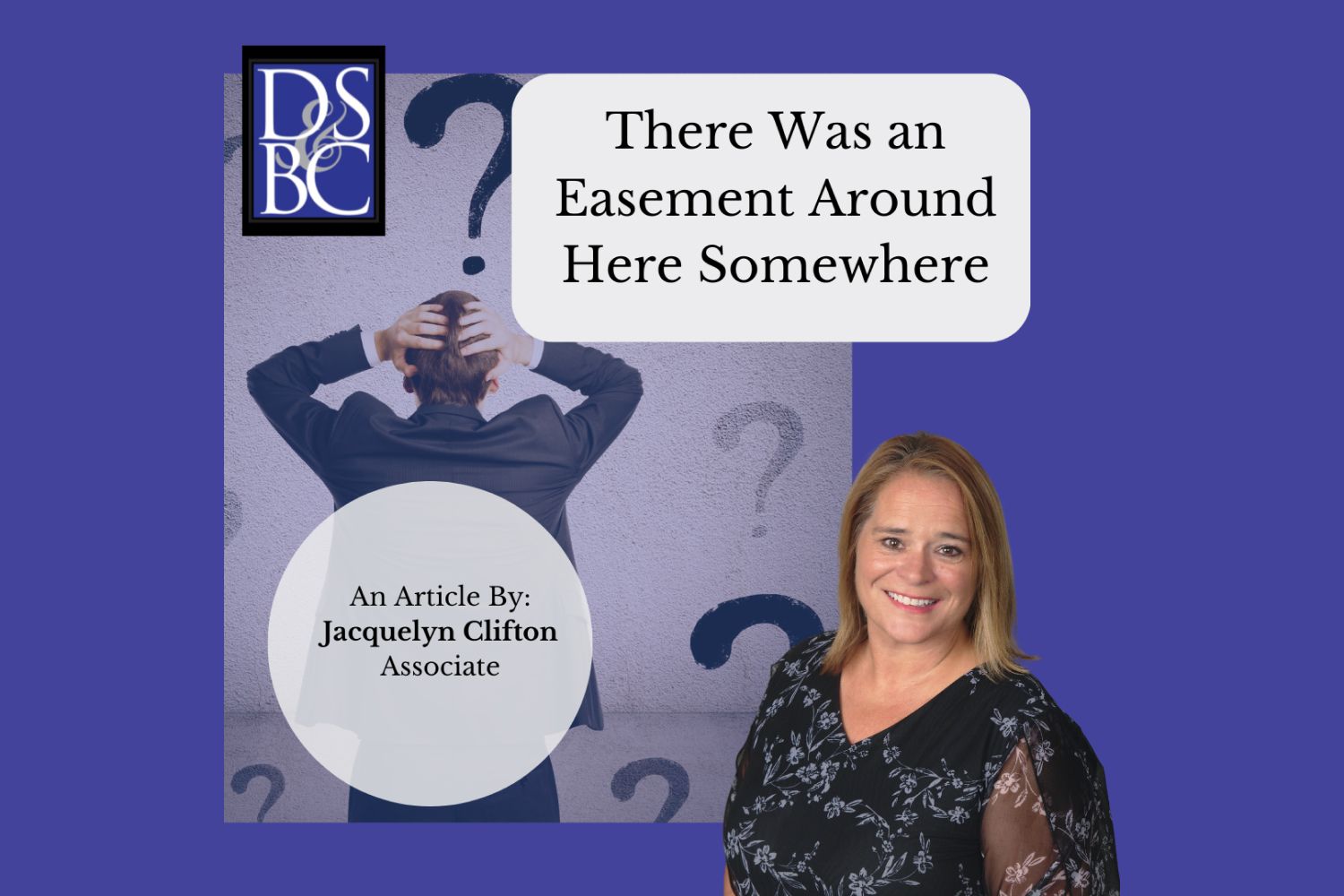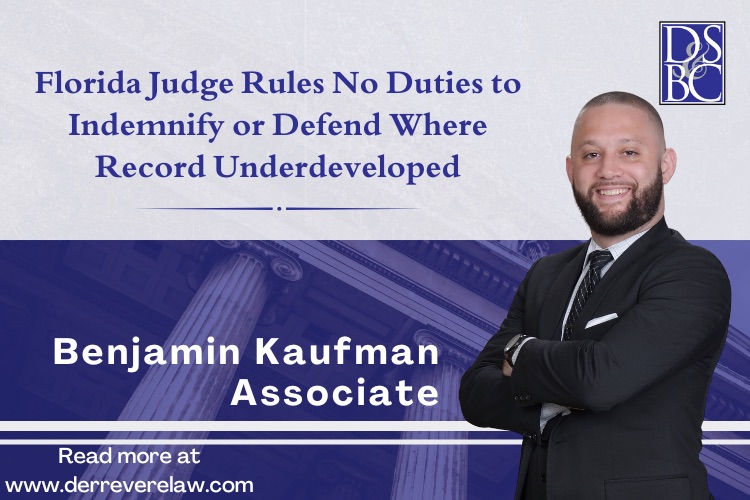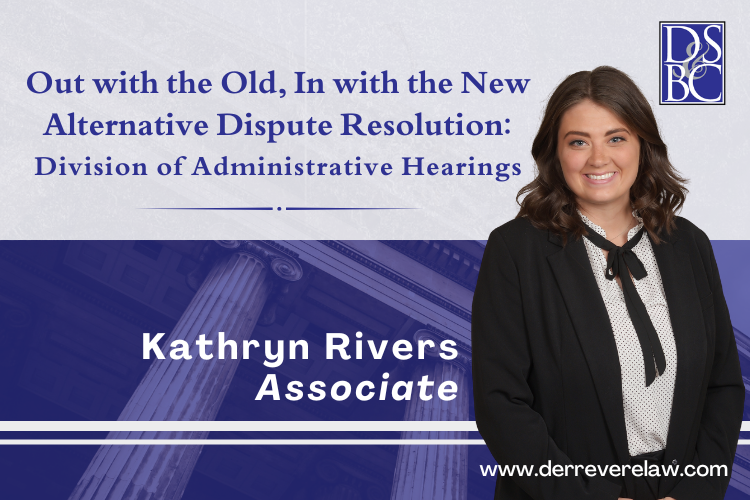There was an Easement Around Here Somewhere

Easements, what are they and how does Florida law categorize them? An easement generally provides the right to use another person’s land for a specific purpose. It is a nonpossessory interest, as it is only the “use” of the land, and not the ownership of the land. If the original purpose of the easement has been frustrated, it may not exist except for in name only. When determining if an easement exists, it is critical to review the language of the suspected easement and the purpose of that easement.
An easement can be an Express Easement, an Implied Easement, an Easement of Necessity, Easement in Gross, a Solar Easement, or a Prescriptive Easement. “An express easement must be interpreted by looking at what the original parties and their successors in title intended, which is manifested by both the circumstances and the actions and statements of those parties.”1 Florida courts treat easements as they do contracts, meaning the plain language should be applied if it is unambiguous. If the language is unambiguous, then the court looks no further than to the language to ascertain the intent of the parties. Express easements are sold or given to a neighboring estate. It is created by an easement agreement in writing between the two estate holders, typically contained within the warranty deed, or it can be created by a court order. A “Person granting easement may restrict easement in any way he [or she] wishes, and easement holder cannot expand easement beyond that contemplated at the time it was granted.”2
There are at least two parties to an easement, the Dominant Estate and the Servient Estate. The Dominant Estate is the beneficiary of the easement, the party that can use the easement and the Servient Estate is the estate that owns the easement or the party where the easement is being used. A unity of title between the Dominant and Servient Estates could frustrate the original purpose of the easement, and therefore, even though the language still exists on the face of the warranty deed, the easement is really just fiction.
Common-Law and Statutory Easements – Chapter §704.01
Florida Statue §704.01 describes a common-law easement that is created by a common grantor of property who grants a piece of land to another party so that it creates a landlocked parcel of land. The grantor, at one time, must have owned both the servient and the dominant properties. Accordingly, a party seeking to establish a common law way of necessity under subsection (1) must establish the following elements:
- That, at one time, both properties were once owned by the same party;
- That a common grantor conveyed the landlocked parcel, thereby causing the need for an easement; and
- That, at the time the landlocked parcel was conveyed, the grantor’s remaining land had access to a public road.3
“In Cirelli, the court explained that, “[b]ecause a common law way of necessity required a common source of title between the dominant and servient parcels, it became obvious that this requirement could not be met in all instances and many parcels of property would remain landlocked. Therefore, the legislature enacted §704.01(2) to provide relief in those instances in which a common law way of necessity could not be obtained.”
“A statutory way of necessity does not require a common source of title and is dependent upon the existence of numerous factors that are not necessary to the creation of a common law way of necessity. Moreover, public policy rather than legal fiction (the presumed intent of the parties) is the basic foundation for statutory ways of necessity.” Id. The court went also took note that “§704.01(2) serves the legitimate public purpose of allowing access to landlocked property so that it may be transformed from useless and unproductive land into valuable and productive property that provides a residence to the owner or produces valuable raw materials such as timber or agricultural products,” as well as the positive effects of development promotion and increased tax revenues. See id.
The Cirelli decision enumerated the following elements necessary to establish a statutory way of necessity under §704.01(2):
- The claimant’s property is landlocked by property belonging to others;
- There is not a practicable route of ingress or egress to the nearest public or private road;
- There is no common law way of necessity under §704.01(1) because there is no unity of title between the landlocked and adjoining tracts;
- The landlocked property is situated outside a municipality (which is no longer applicable under the current version of the statute);
- The landlocked property is being used or the owner desires to use the property as a dwelling or for agricultural, timber raising or cutting or stock raising purposes; and
- The statutory way of necessity sought over the adjoining parcel is the “nearest practicable route” of access.4
Additionally, §704.02, under statutory easements, requires compensation to the servient property holder, otherwise the taking would violate the State and Federal Constitution: “No private property shall be taken “except (i) for a public purpose and (ii) and with full compensation therefore paid to each owner. This is called eminent domain. The public purpose is to provide a lawful means by which to accomplish full utilization of the state’s natural resources, their development in the ordinary channels of commerce and industry.”5 The existence of the statutory easement would be judicially determined, and the amount of compensation awarded is determined by a jury pursuant to Florida statute.
You also can claim an easement if it is a public road. A road becomes dedicated to public use under either common law dedication or statutory dedication. Common law dedication requires proof of the following:
- An intention by the landowner to dedicate the property to public use and
- An acceptance by the public.6
Proof of the intention to dedicate and of the acceptance must be clear and unequivocal, and the burden of proof is on the party claiming the dedication.7 Requirements for a statutory dedication are contained in § 95.361(1), Fla. Stat. This section provides that if a road constructed by a municipality has been maintained or repaired continuously for four years by the municipality, the road shall be deemed dedicated to the public, and title to the road will vest in the municipality, “if it is a municipal street or road.”
Temporary Construction Easements
Sometimes an easement is needed on a temporary basis simply to allow contractors access to a piece of private property for a specific purpose. These are known as Temporary Construction Easements (“TCE”). An example of this is when a government entity requires access across private property due to a public road expanding. The private property owner is entitled to just compensation even though the taking is only temporary. If the government and the private property owner are not able to resolve the terms of the TCE, the governmental agency can file an eminent domain lawsuit in compliance with the State and Federal Constitution. The TCE only remains as long as is necessary for the project to be completed. It is critical to specifically identify the terms of the TCE so that all parties are aware of the following: 1. The amount and type of compensation, 2. The duration and scope of the TCE, and 3. The party’s obligations for restoration, damages, or violations of the original terms of the TCE.
When dealing with an easement issue, the most important thing to remember is that each easement is handled differently depending on the property and obtaining an opinion from an attorney who deals with easements on a daily basis should give you the peace of mind moving forward.
1 Condron v. Arey, 165 So.3d 51 (5th DCA, 2015).
2 Star Island Associates v. City of St. Petersburg Beach, 433 So.2d 998 (2nd DCA, 1983).
3 Matthews v. Quarles, 504 So. 2d 1246 (Fla. 1st DCA 1986).
4 Cirelli v. Ent, 885 So. 2d 423 (Fla. 5th DCA 2004), citing Boyd v. Walker, 776 So. 2d 370 (Fla. 5th DCA 2001), and Ganey v. Byrd, 393 So. 2d 652 (Fla 1st DCA 1980).
5 Stein v. Darby, 126 So.2d 313 (Fla. 1st DCA 1961).
6 Bishop v. Nussbaum, 175 So.2d 231 (Fla. 2d DCA 1965).
7 Roe v. Kendrick, 146 Fla. 119, 200 So. 394 (1941).



